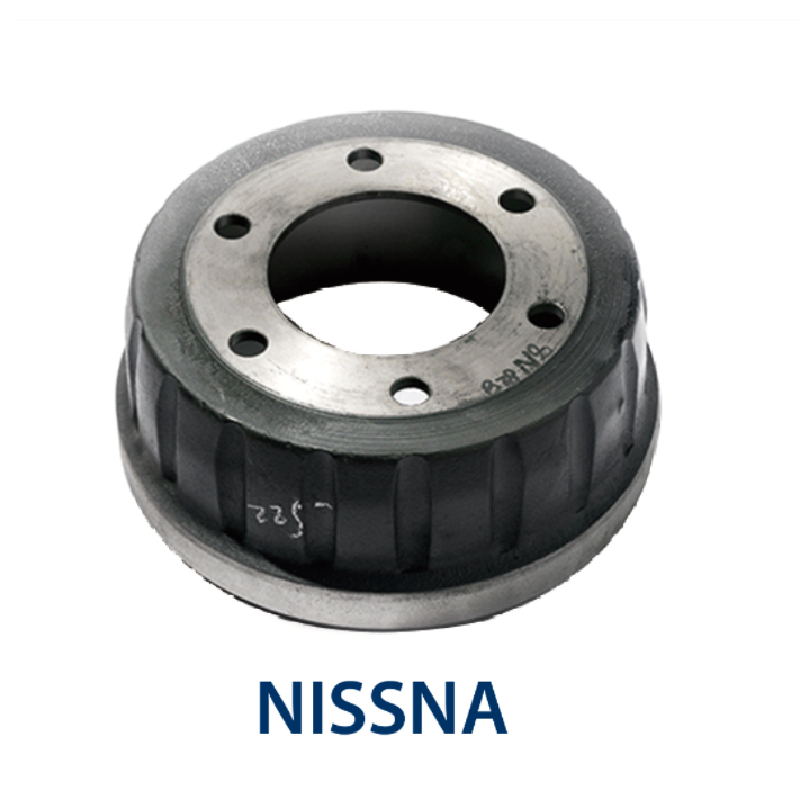Sep . 28, 2024 14:43 Back to list
Understanding Air Brake Drum Functionality and Maintenance Techniques for Trucks and Trailers
Understanding Air Brake Drums Functionality, Design, and Maintenance
Air brake systems are crucial components in heavy-duty vehicles such as trucks, buses, and trailers. Among the various parts of an air brake system, the brake drum plays a vital role in ensuring effective braking performance. In this article, we will delve into the functionality, design, and maintenance of air brake drums, highlighting their significance in the overall braking system.
What is an Air Brake Drum?
An air brake drum is a cylindrical component that is part of the drum brake system. It is typically made from cast iron or aluminum and is installed on the vehicle’s axle. The drum serves as a surface against which brake shoes press to create friction, slowing down or stopping the vehicle. When the driver applies the brakes, compressed air is released into the brake chamber, pushing the brake shoes outward into contact with the spinning drum.
Functionality of Air Brake Drums
The primary function of the air brake drum is to convert the mechanical energy from the brake system into heat energy through friction. When the brake shoes engage with the drum, they create a significant amount of friction, resulting in heat generation. This is essential for slowing down the rotation of the wheels.
The design of the drum allows it to dissipate heat effectively. Overheating can lead to brake fade, where the brakes lose their effectiveness due to excessive heat buildup. To maintain optimal performance, brake drums are constructed with materials that can withstand high temperatures and are often designed with cooling fins or vents to aid in heat dissipation.
Design Considerations
The design of air brake drums is critical for their durability and effectiveness. Key factors include
1. Material Composition Most brake drums are made from cast iron due to its strength and heat-resisting properties. Aluminum may also be used for lightweight applications, although it’s less common in heavy-duty vehicles.
2. Size and Weight The dimensions of the drum must be appropriate for the load capacity of the vehicle. Larger and heavier vehicles require more robust and larger drums to accommodate the increased braking forces.
air brake drum

3. Surface Finish The internal surface of the brake drum must be smooth to ensure even contact with the brake shoes, while also allowing for some degree of friction. A well-finished surface enhances braking performance and prolongs the life of the brake shoes.
4. Shape and Design Features Many air brake drums have a curved design that provides added strength and stability. Features like cooling fins or ventilation holes can further aid in heat dissipation.
Maintenance and Inspection
Maintenance of air brake drums is critical for the safe operation of heavy-duty vehicles. Regular inspections can identify wear and tear, ensuring that the drums and associated brake components function properly. Key maintenance tasks include
1. Visual Inspection Regularly check for cracks, warping, or excessive surface wear. Any visible damage may compromise brake efficiency and should be addressed immediately.
2. Measuring Thickness Brake drums have a minimum thickness specification. When the material wears down below this threshold, it must be replaced to maintain safe braking performance.
3. Cleaning Brake dust and debris can accumulate over time. Cleaning the brake drum helps maintain proper function and reduces the risk of brake fade.
4. Replacement of Brake Shoes Since the shoes make direct contact with the drum, they will inevitably wear out over time. Regularly checking and replacing brake shoes as needed can prevent unnecessary wear on the drum itself.
Conclusion
Air brake drums are integral to the safety and efficiency of heavy-duty vehicles. Their ability to effectively convert mechanical energy into heat through friction plays a pivotal role in the braking process. Understanding their functionality, design, and importance of regular maintenance is essential for fleet operators and vehicle owners alike. By ensuring that air brake drums are in optimal condition, drivers can enjoy a safer and more reliable driving experience on the road.
-
HINO Industrial Efficiency-Jiangsu Hino Industrial|Productivity Optimization&Cost Reduction
NewsJul.12,2025
-
HINO-¡Ң���ຽ��е��������˾|Advanced Industrial Solutions&Energy Efficiency
NewsJul.12,2025
-
Premium Brake Drum Iveco – Durable Drum Brake Drum & Brake Shoe Solutions
NewsJul.08,2025
-
High-Performance Brake Drum Liza for Enhanced Safety Reliable Drum Brake Drum & Brake Shoe Solutions
NewsJul.08,2025
-
High-Quality Brake Drum MAZ – Durable Drum Brake Drum & Brake Drum and Brake Shoe for Optimal Performance
NewsJul.07,2025
-
High-Quality Brake Drum Kamaz for Reliable Performance Durable Drum Brake Drum & Brake Shoes
NewsJul.07,2025
